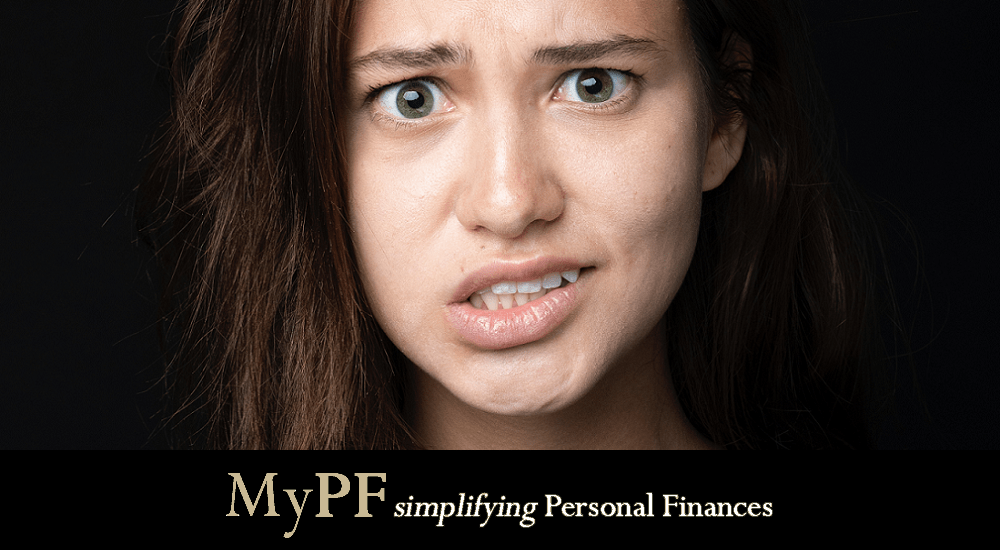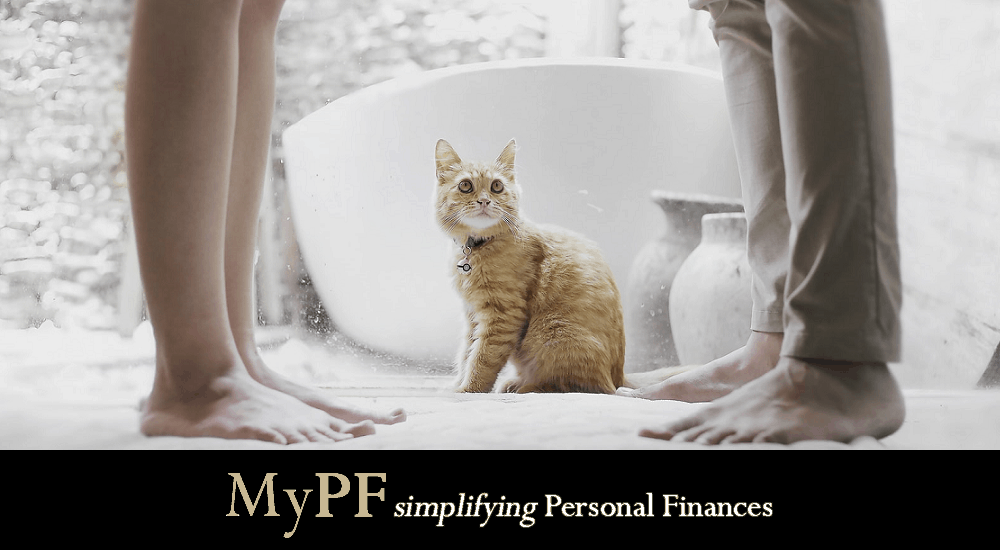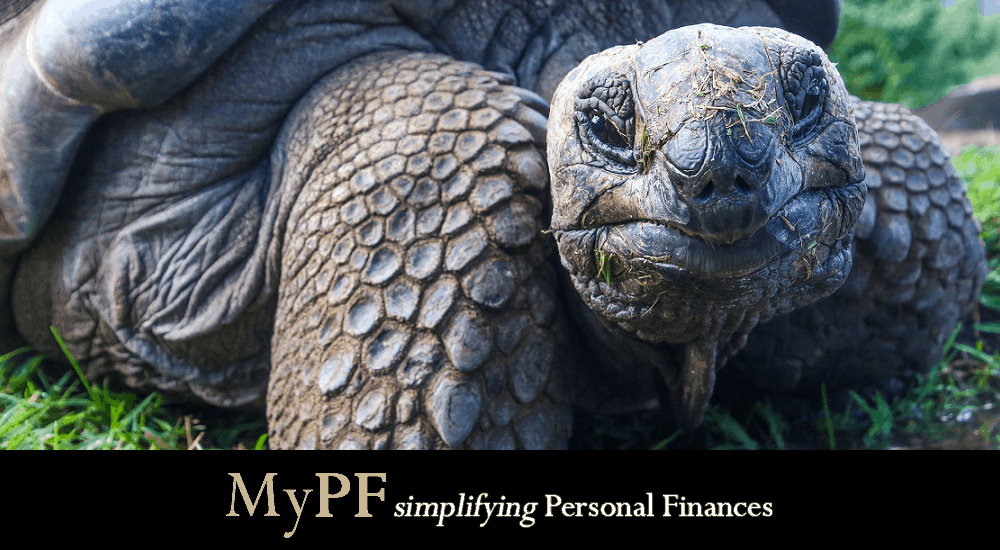5 corrections for when your emergency fund isn’t as healthy as you thought it was.
You may know it by many names, whether it is emergency fund, emergency savings, rainy day fund, or the common Malaysian expression: backup.
Your emergency fund is a pool of money we keep for the purpose of covering any sudden and unexpected expenses. It is important that each of us have an emergency fund set in place. It’s one of those things you won’t be reaping much benefits from normally, until you need it and then it is a life-changing must-have you will be so very grateful for.
Assuming you already have one in place, what exactly do you do with this pool of money when you aren’t using it?
Let’s have a quick look at what possible mistakes you might be doing with your emergency fund and how to avoid them.
Contents
Mistake #1. Incorrect Target Amount
It is recommended to set your emergency fund amount between 3 months’ to 12 months’ worth of your household expenses. This varies depending on factors that make up your household size, such as income-earners versus dependents.
Any less than your appropriate target, and you might have insufficient funds to cover you and your household in a significant emergency, for example, upon losing your job and needing a few months before getting hired again.
Any more than your appropriate target, and you might be better off channeling the excess into your investment fund. Why so? We explain in our next point in more detail but in summary your investment fund would be giving you higher returns compared to your emergency fund.
So, how much should be set aside? A rough guide would be:
- 3 month’s worth of expenses: Single, with no dependents
- 6 month’s worth of expenses : Married, with 1-2 dependents
- 12 month’s worth of expenses: Business owners, entrepreneurs, freelancers
Our article on How Much Should I Save for Emergencies delves deeper into options with example calculations to help you better determine the right sum for you.
Mistake #2. Keeping It In The Wrong Place
Should you face an emergency, chances are you need to cough up cash fast. This means your emergency fund needs to be placed somewhere easily accessible and in a form that can be quickly liquidated into cash (think in hours or at most in days).
Some common options folks in days long past took was to hide their emergency cash in biscuit tins, in a hole they dug in their bedroom wall, or even inside their mattress. Easily accessible? Yes. Quickly liquidated? Yes. BUT. Safety is questionable (think: robbers or even hungry mice!) and keeping a large sum sitting pretty without letting it accumulate any interest do not make these options very appealing.
On the flip side, there are those who decide to prioritize growing their emergency money by moving their money into investments. After all, an amount the equivalent of several months’ worth of expenses feels too promising to keep idle for these eager beavers. Money secure? Likely, yes depending how reputable their investment vehicles are. Money growing? Yes. BUT. Quickly liquidated? No. Consider too the fact that what if you desperately need cash during an economic downturn; you may end up with substantially less in hand than you started out with.
As such, balance is key. Seek options which lie on middle ground, such as:
- Fixed deposits: A financial instrument from banks providing FD holders with higher returns than a normal savings/checking account with a time commitment from 1 month or longer with longer periods generally providing better returns.
- Money market: Funds invested in bank deposits and short term placements with less than one year to maturity. Money market funds invest in liquid, low risk money market instruments that are in effect short-term deposits (loans) to banks.
- Income portfolio: A fund setup with the majority of funds in money market funds and the remainder in fixed income assets such as high grade bonds.
- Capital loan: A flexible conventional housing loan that allows you to place funds in to reduce the capital (owing) in your property loan that can be withdrawn if needed.
Mistake #3. Dipping Into It for Non-Emergencies
Want just a little extra to afford down-payment for that luxury car? How about oops spent a wee bit too much on groceries this month? Or, “this item I’ve really wanted is suddenly on sale but I did not budget for it”?
If you are dipping in your emergency fund for non-emergencies, you are cheating yourself in 2 ways.
Firstly, you are cheating yourself of this backup money. You never know when an emergency occurs. What if it happens an hour after you gave your RM12k to the car salesman? Also, think about how long it would take you to bring your emergency fund back up to its correct amount. Giving in to your wants may feel good now, but it should NEVER be while risking your emergency cash.
Secondly, you are cheating yourself of a correct spending budget. Either your budget needs to be revised to adapt to your changing needs (entertainment category in your budget needs an increase?), or the situation is due to something unnecessary you should not spend on. Only with a correctly adjusted budget can you manage your household cash flow well.
Therefore, repeatedly remind yourself that your emergency fund is sacred. Don’t touch it unless it is a true emergency. Meanwhile, revisit your budget and revise it as necessary. Also worth considering is whether you might be unconsciously falling victim to lifestyle creep.
Mistake #4. Forgetting to Adjust or Replenish It
In our first point above, we covered what your target amount should be. However, two factors can influence whether the sum you have in your emergency fund is of the correct amount.
Firstly, we all need to adjust the target sum every handful of years. As time goes by, several factors that influence this sum may change, for example say inflation, rising cost of living, change in number of dependents, health issues, and change in lifestyle choices.
Secondly, your sum can be affected when you’ve used some of it. Many after facing a dire emergency may either forget to replenish or choose to delay doing so due to mental health reasons. Sometimes after such chaos, you may just want to take a mental break, we understand your need. However, it is imperative that replenishing your emergency fund be one of the things you don’t take a break from as you would want to be prepared for the next sudden shock without stressing your already stressed self more.
Therefore, please review your expenses and determine how much you need to have in your emergency fund. Identify the difference in what you have in there now and how much you need to have in there. Then, take action with a Financial Recuperation Plan (FRP).
Mistake #5. Using A Credit Card As Your Emergency Fund
You might be surprised by how many people assume their credit card is their best choice as an emergency fund.
On the one hand, it’s convenient and easy to use. Plus, you can count on it for thousands of Ringgit with a swipe or a few button presses.
On the other hand, consider the high interest rates should you be unable to make your repayments immediately. This could also lead to a poor credit score if you have difficulty making repayments.
Credit cards have their many benefits for sure. While handy for small financial emergencies such as realizing you have insufficient cash to pay for your groceries at the supermarket cashier, it’s not the best choice for when you need large amounts running into thousands of Ringgit.
Conclusion
Your emergency fund is your financial safety net when you face unexpected financial troubles. While insurance does covers many things, not everything is covered by insurance. Do the right thing for yourself and have a proper emergency fund set up to cover you when you need it. It’s worth it.
What other mistakes should we look out for with our emergency savings? Share your view with us in the comments.











Leave A Comment